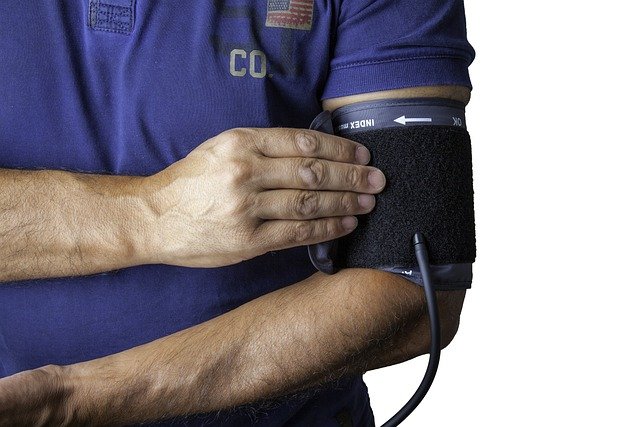Managing Atrial Fibrillation: Understanding Treatment Approaches
Atrial fibrillation represents a common heart rhythm condition where treatment strategies focus on managing symptoms and reducing potential complications. This overview examines various approaches that healthcare providers may consider, from medication options to procedural interventions. Understanding these treatment possibilities can help facilitate informed discussions with medical professionals about personalized care plans.

Atrial fibrillation represents one of the most common cardiac arrhythmias, characterized by chaotic electrical signals in the heart’s upper chambers. The condition disrupts the normal rhythm, causing the atria to quiver rather than contract effectively. This irregular beating pattern can lead to serious health complications, making proper management crucial for maintaining quality of life and reducing risks.
What Role Does an Atrial Fibrillation Echocardiogram Play?
An echocardiogram serves as a fundamental diagnostic tool in evaluating atrial fibrillation. This non-invasive ultrasound examination creates detailed images of the heart’s structure and function, allowing healthcare providers to assess chamber size, valve function, and blood flow patterns. For AFib patients, echocardiograms help identify underlying structural abnormalities, measure the heart’s pumping efficiency, and detect blood clots that may form in the atria. Transesophageal echocardiography, a specialized version, provides even clearer images by positioning the ultrasound probe in the esophagus, offering superior visualization of the left atrial appendage where clots commonly develop. These imaging studies guide treatment decisions and help determine the safest timing for procedures like cardioversion.
What Are the Available Atrial Fibrillation Treatment Options?
Treatment strategies for atrial fibrillation fall into several categories, each addressing different aspects of the condition. Rate control medications, including beta-blockers and calcium channel blockers, slow the heart rate to more manageable levels. Rhythm control approaches use antiarrhythmic drugs or procedures to restore and maintain normal sinus rhythm. Anticoagulation therapy with medications like warfarin, apixaban, or rivaroxaban prevents stroke by reducing clot formation risk. Catheter ablation, a minimally invasive procedure, destroys the heart tissue causing abnormal electrical signals. Surgical options like the maze procedure create scar tissue patterns that redirect electrical impulses. Cardioversion uses electrical shocks or medications to reset heart rhythm. The choice depends on symptom severity, underlying conditions, stroke risk factors, and patient preferences, requiring careful discussion with cardiologists to determine the most appropriate path.
How to Care for Atrial Fibrillation in Daily Life?
Daily management of atrial fibrillation extends beyond medical treatments to encompass comprehensive lifestyle modifications. Maintaining a heart-healthy diet rich in vegetables, fruits, whole grains, and lean proteins while limiting sodium intake helps control blood pressure and reduce AFib burden. Regular physical activity, tailored to individual capacity and approved by healthcare providers, strengthens cardiovascular health without triggering episodes. Stress management techniques such as meditation, yoga, or deep breathing exercises can minimize emotional triggers. Adequate sleep, typically seven to nine hours nightly, supports overall heart function. Monitoring symptoms through symptom diaries or wearable devices helps track patterns and identify triggers. Regular follow-up appointments ensure treatment effectiveness and allow for timely adjustments. Medication adherence is critical, particularly for anticoagulants that prevent stroke. Weight management plays a significant role, as excess weight increases AFib risk and severity.
What Are the Key AFib Dos and Don’ts?
Understanding which behaviors support heart health and which may worsen atrial fibrillation empowers patients to make informed daily choices. Do take all prescribed medications exactly as directed, even when feeling well. Do maintain regular communication with your healthcare team about symptoms or concerns. Do stay hydrated with water throughout the day. Do monitor your pulse regularly to detect irregularities. Don’t consume excessive alcohol, as even moderate drinking can trigger episodes. Don’t use tobacco products or recreational drugs, which significantly increase arrhythmia risk. Don’t skip doses of blood thinners, as this elevates stroke danger. Don’t engage in extreme physical exertion without medical clearance. Don’t ignore new or worsening symptoms like chest pain, severe shortness of breath, or dizziness. Don’t stop medications without consulting your doctor, even if side effects occur.
What Triggers AFib Attacks and How to Avoid Them?
Identifying and avoiding personal triggers represents a crucial component of AFib management. Alcohol consumption, particularly binge drinking or heavy use, ranks among the most common triggers, causing what some call holiday heart syndrome. Caffeine sensitivity varies individually, but excessive intake may provoke episodes in susceptible people. Dehydration and electrolyte imbalances disrupt normal electrical conduction. Sleep deprivation and sleep apnea significantly increase AFib risk. Emotional stress and anxiety activate the sympathetic nervous system, potentially triggering arrhythmias. Certain medications, including decongestants and stimulants, can induce episodes. Underlying illnesses like thyroid disorders, infections, or lung disease may precipitate AFib. Intense physical activity, especially in untrained individuals, sometimes triggers attacks. Temperature extremes and rapid changes in body temperature affect heart rhythm. Keeping a detailed log of activities, foods, and circumstances surrounding AFib episodes helps identify individual patterns and enables more effective prevention strategies.
Conclusion
Managing atrial fibrillation requires a multifaceted approach combining medical treatments, diagnostic monitoring, lifestyle modifications, and trigger avoidance. Success depends on active patient participation, consistent medication adherence, regular medical follow-up, and informed decision-making. While AFib presents ongoing challenges, modern treatment options and comprehensive care strategies enable most patients to maintain active, fulfilling lives while minimizing complications. Working closely with healthcare providers to develop personalized management plans ensures the best possible outcomes and quality of life.
This article is for informational purposes only and should not be considered medical advice. Please consult a qualified healthcare professional for personalized guidance and treatment.



